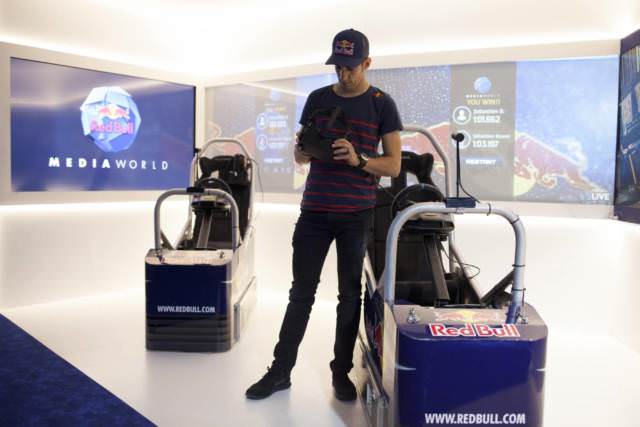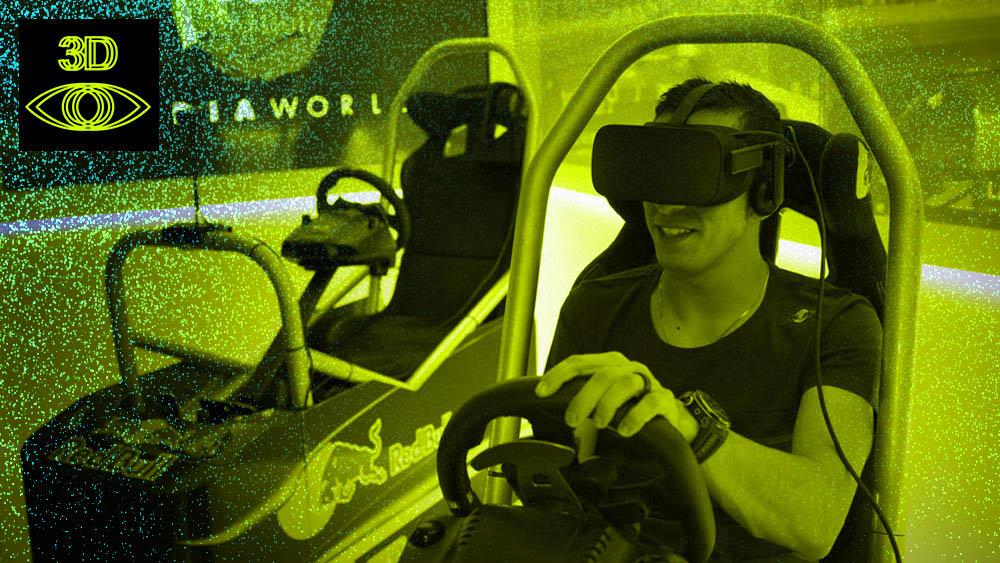Red Bull is furthering its footprint in virtual reality by bringing a driving competition to engage motorsport enthusiasts and caffeine-craving fans alike.
Fans who visit the Switzerland-located Red Bull Media World now have the chance to compete against Formula E driver Sébastien Buem’s fastest lap time from last season’s Formula E Paris ePrix through a personalized and social VR experience.
VR entertainment company Virtually Live partnered with Formula E and created the Red Bull-branded bespoke activation by using real-time data from Buemi’s race car.
“The immersive nature of the experience makes it completely unique,” Oliver Weingarten, director of motorsport at Virtually Live, told AListDaily. “Giving a consumer the opportunity to not just sit in a race car going around a race track during the race, but being able to feel the speed and each turn is as close to the real experience of actually being in the car. Consumers crave content and access—and that’s what we’re providing in tandem with a social experience.”

“This is a really innovative experience, which allows me to engage with my fans, at the same time as giving them the experience of driving my Formula E car in VR around the Paris ePrix track,” said Buem.
Weingarten said they’ll continue to update the campaign as required and showcase it to fans of not just Formula E and motorsports, but general visitors to the Verkehrshaus der Schweiz in Luzern through social media channels and ongoing publicity directly from Red Bull. In addition to the Austrian energy-drink maker, Virtually Live has also created experiences for Audi, TE Connectivity and Julius Baer.
A Red Bull spokesperson told AListDaily the brand is activating the experience at the Swiss Museum of Transport through its owned channels as well leveraging the platform the museum presents. The brand will also be using internal marketing channels, including web and social presences, customer mailings as well as numerous digital advertising opportunities on-site to market the VR experience.
“Red Bull Media World, located in Switzerland’s most-visited museum, provides the perfect platform to surprise and inspire our consumers and excite with the fascinating topics of media and innovation,” the spokesperson said. “It will be activated all year around.”
Red Bull arguably is the envy of other brands, creating premium content and entertainment masked as marketing. The privately held company also creates extreme-sports-centric VR experiences on its own channels.
On its site earlier this month, Red Bull wrote “the verdict is still out on virtual reality’s best place in gaming” while favorably describing the PlayStation VR game Gran Turismo Sport.
Showcasing scintillating action in VR-branded experiences appears to be serving the likes of Red Bull well, according to recent reports. In-game virtual reality ads boosts same-day recall for 70 percent of users whenever a 3D-branded object is inserted into interactive gameplay, a YuMe study found.
Last year, Mountain Dew similarly put fans at the driver’s seat of immersion by creating a VR driving experience with NASCAR drivers Dale Earnhardt Jr., Kasey Kahne and Chase Elliott.
As branded VR content continues to rise, so does consumer affection. A Virtual Sky study testing the effectiveness of marketing in VR indicated brand recall was at least eight times more effective and resulted in double the intent to share.
“The stories that stick most and inspire our audience are the mind-boggling ones that are beyond ordinary and never been seen before,” Lukas Cudrigh, senior vice president of digital at Red Bull Media House, told AListDaily earlier this year. “The Red Bull brand is interdependent with experiences . . . It’s a super exciting era right now. Everything is in motion. We are evidence that anyone can be in entertainment today.”

